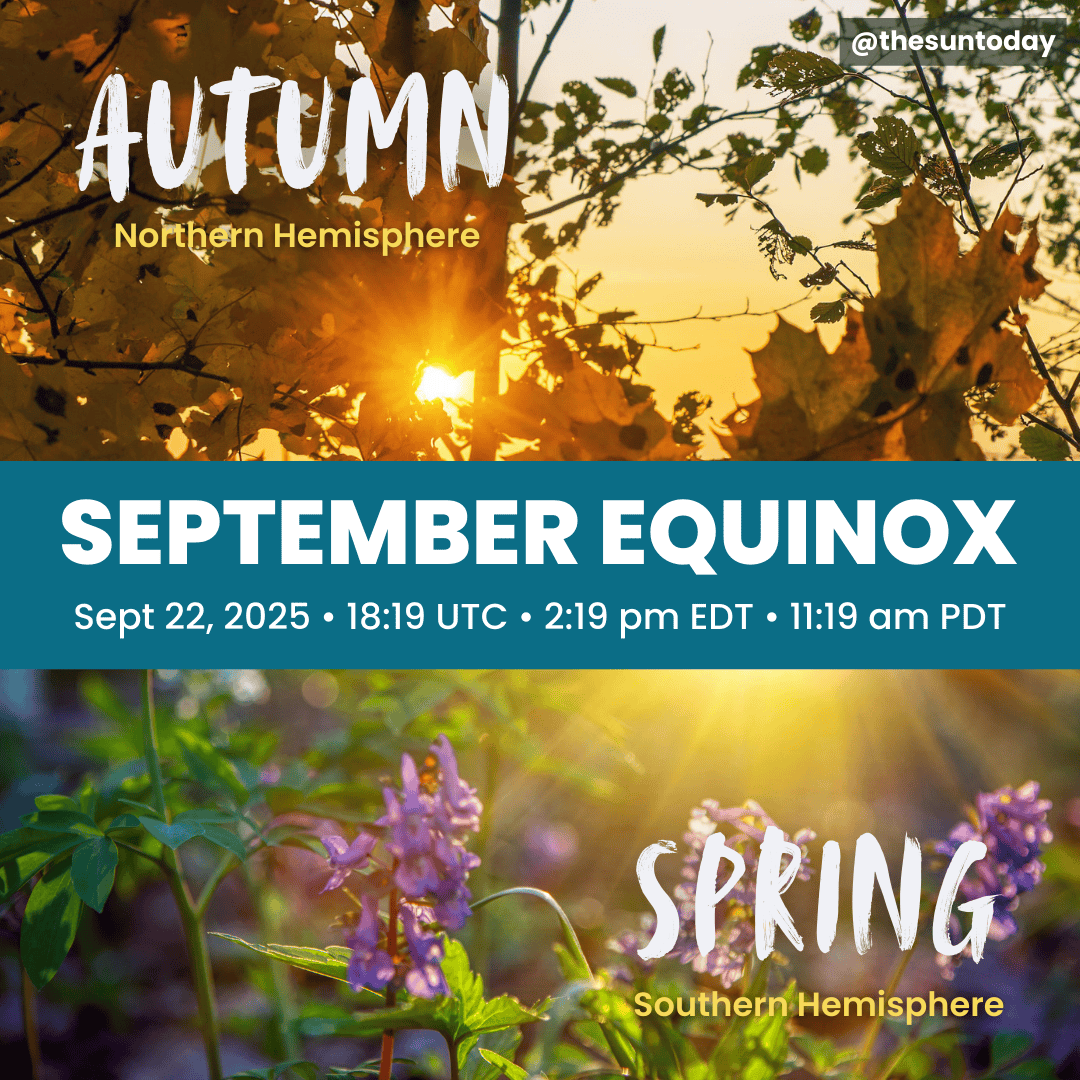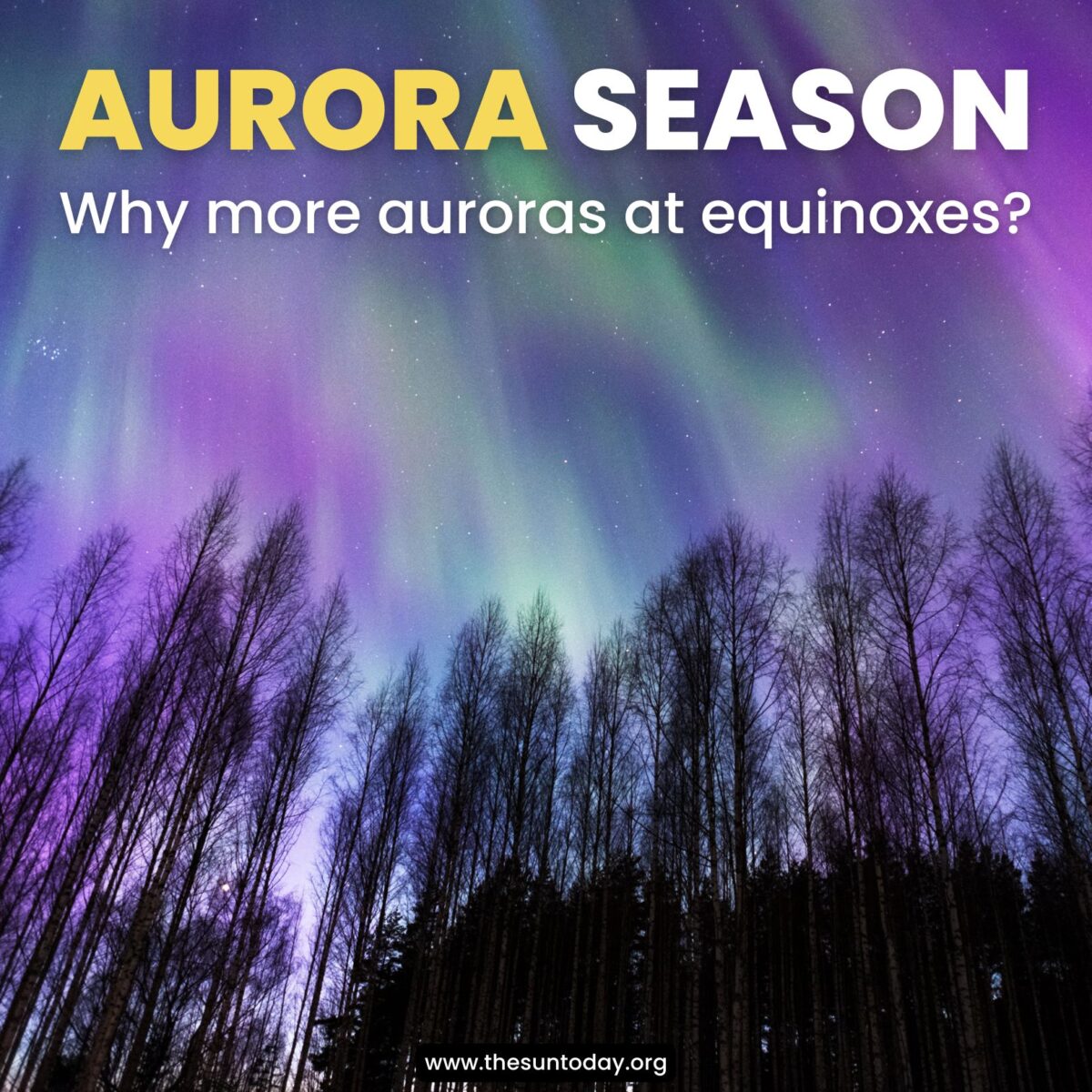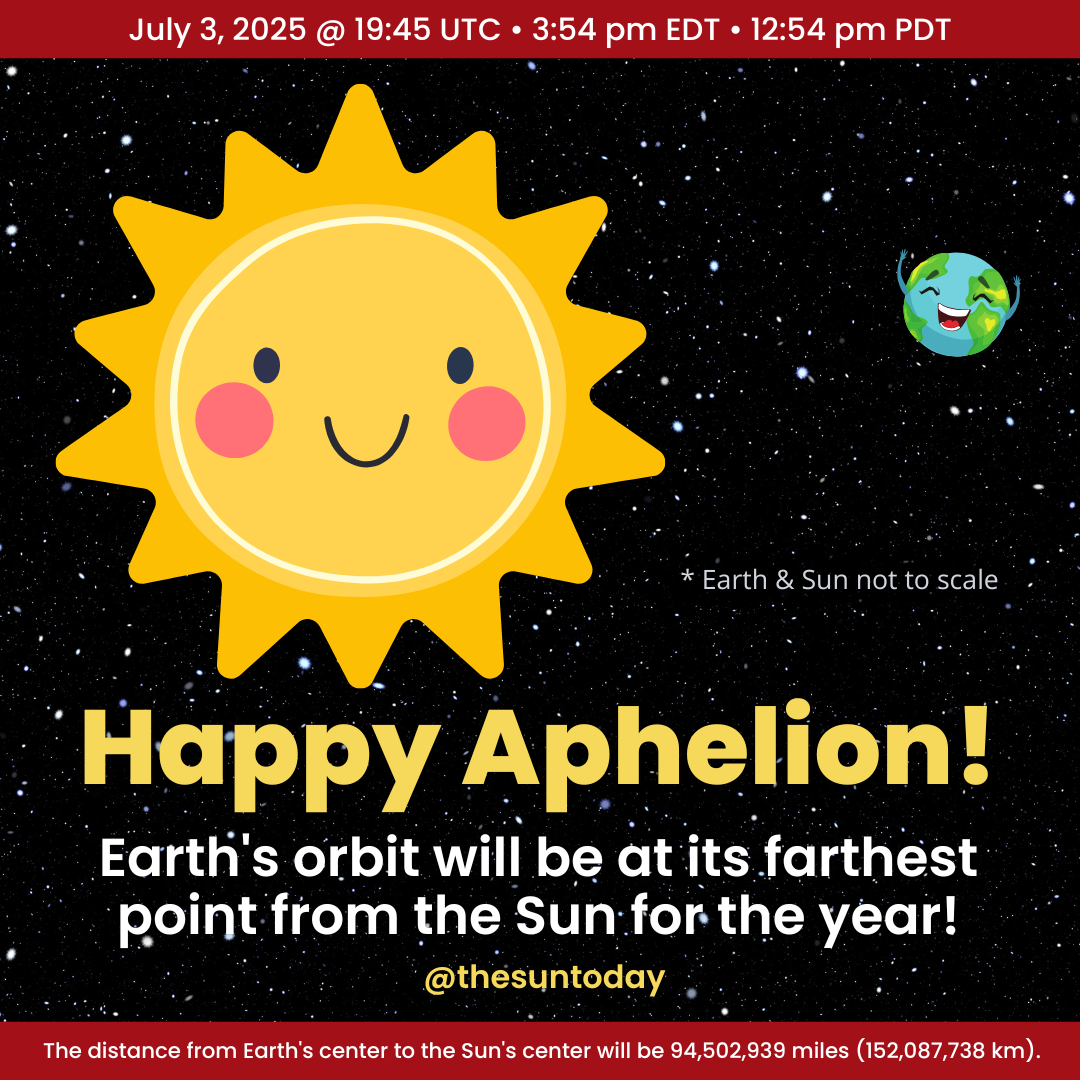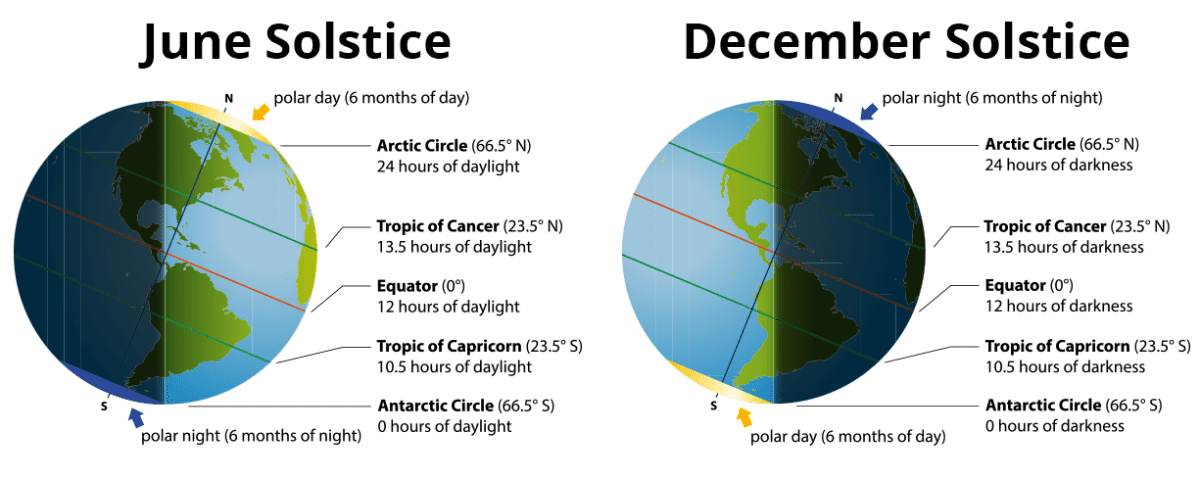
The June solstice is the beginning of summer for the northern hemisphere and winter for the southern hemisphere. It occurs between June 20th and 22nd every year.
For 2021 it occurs on June 21st at 3:22 UTC (11:32 pm EDT on June 20th).
There are two solstices in a year, the June solstice (between June 20-22) and the December solstice (between December 20-23). On the June solstice, the Sun reaches its highest point in the sky for an observer at the North Pole. On the December solstice, the Sun reaches its highest point in the sky for an observer at the South Pole. Solstices also mark the change from fall to winter or spring to summer.
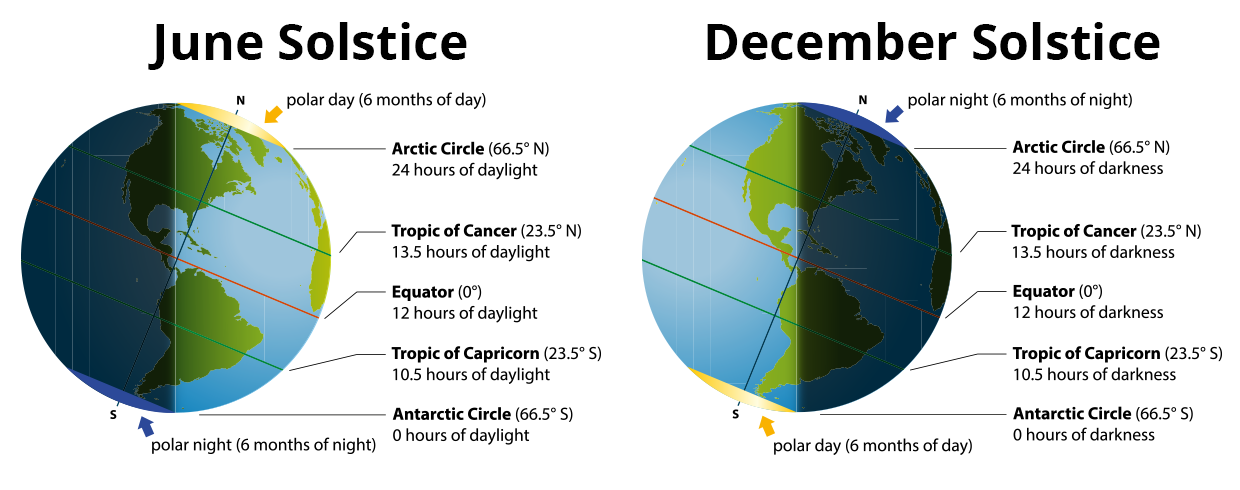
June & December Solstice Comparison – NOTE: Lines are to demonstrate concepts, they are not geographically accurate.
The solstices happen because of the tilt of Earth’s axis of rotation with respect to its orbital path around the Sun. The axis of rotation is an imaginary line drawn straight through Earth connecting the North Pole to the South Pole. This line is tilted 23.5° from Earth’s orbital path around the Sun. This means that the Sun’s light does not hit the Earth evenly at a particular latitude above and below the equator. This tilt is the cause of Earth’s seasons.
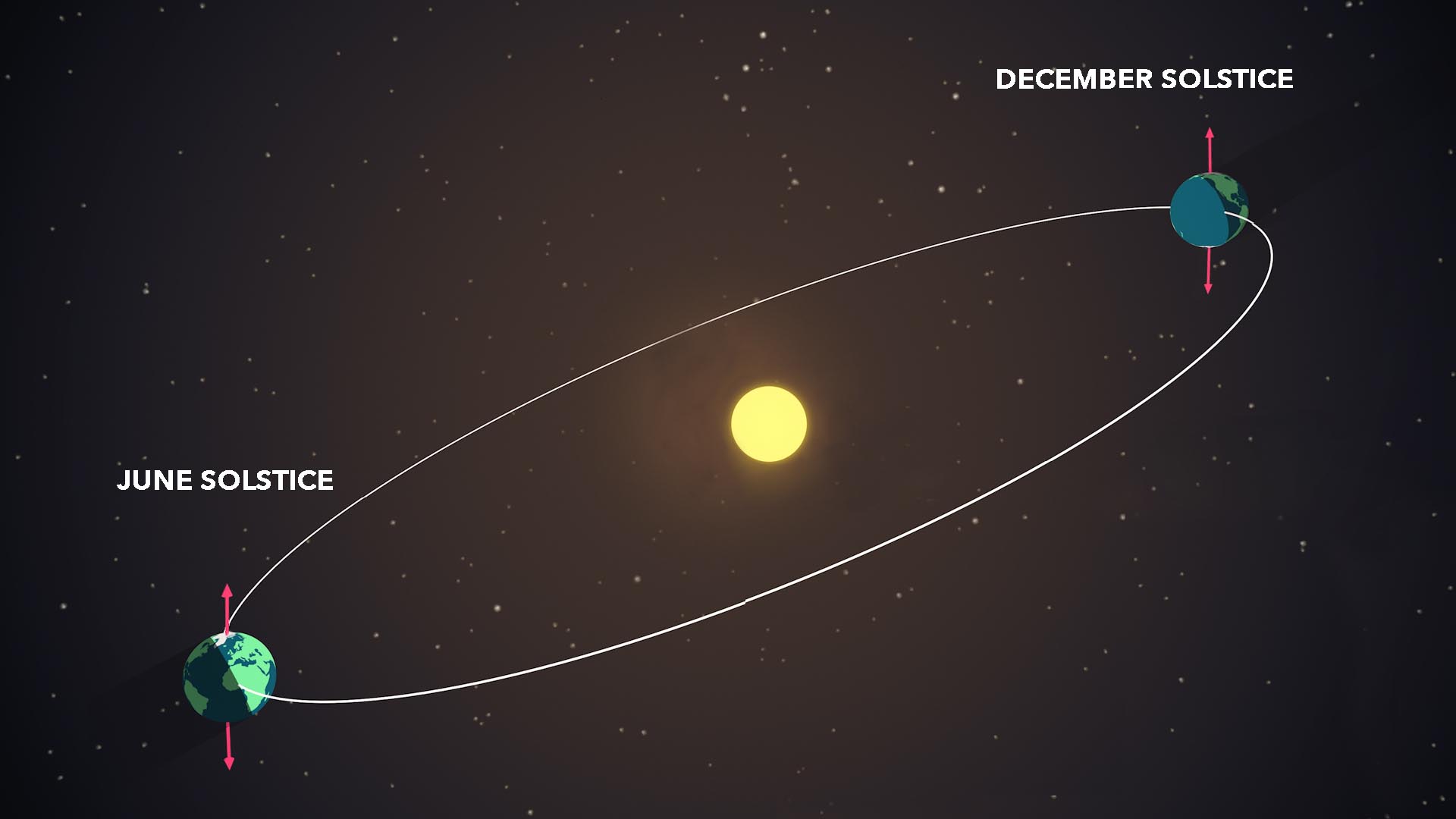
During the solstices, Earth reaches a point where its tilt is at the greatest angle to the plane of its orbit, causing one hemisphere to receive more daylight than the other. (NASA/Genna Duberstein)
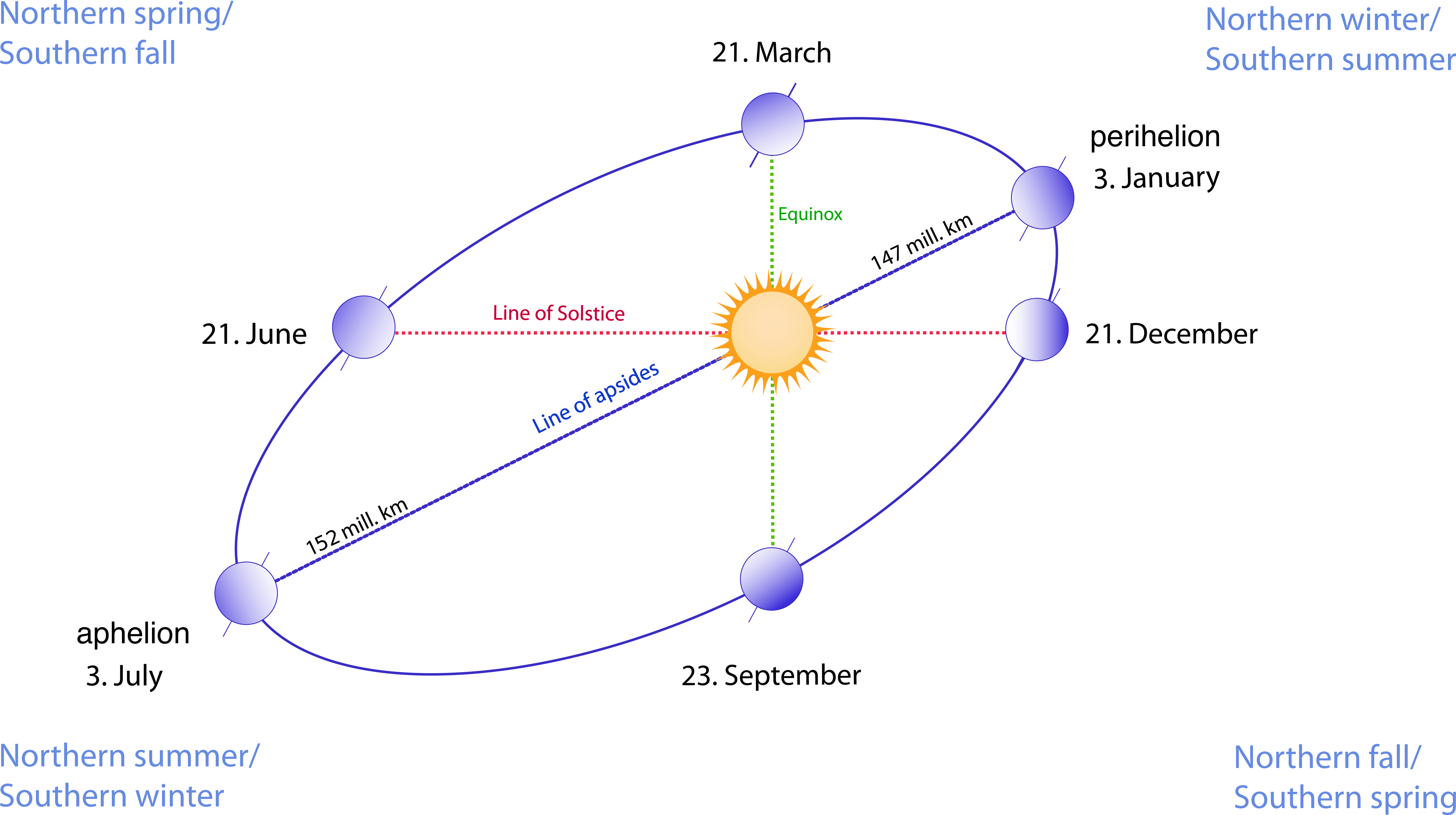
This diagram shows the relation between the line of solstice and the line of apsides of Earth’s elliptical orbit. The orbital ellipse (with eccentricity exaggerated for effect) goes through each of the six Earth images, which are sequentially the perihelion (periapsis—nearest point to the Sun) on anywhere from 2 January to 5 January, the point of March equinox on 20 or 21 March, the point of June solstice on 20 or 21 June, the aphelion (apoapsis—the farthest point from the Sun) on anywhere from 4 July to 7 July, the September equinox on 22 or 23 September, and the December solstice on 21 or 22 December. CREDIT
This means that the Sun’s light does not hit the Earth evenly at a particular latitude above and below the equator. This tilt is the cause of Earth’s seasons.
The equator is an imaginary line drawn right around Earth’s middle, like a belt. It divides Earth into the Northern and the Southern Hemispheres. The imaginary lines around Earth that are parallel to the Equator are called lines of latitude. They are numbered from 0° to 90°. The one at 0° is the equator itself. The higher the number, the farther north (if it’s a + number) or south (if it’s a − number).
Because of Earth’s tilt is 23.5° the latitudes of +23.5° and −23.5° are special and have special names. The one in the Northern Hemisphere, +23.5° latitude, is called the Tropic of Cancer. The one in the Southern Hemisphere, − 23.5° latitude, is called the Tropic of Capricorn.
These are the latitudes where the Sun is directly overhead at noon once a year. In the Northern hemisphere, on the Tropic of Cancer, that is the June Solstice. In the Southern Hemisphere, on the Tropic of Capricorn, that is the December Solstice. These solstice days are the days with the most (for Summer) or fewest (for Winter) hours of sunlight during the whole year.
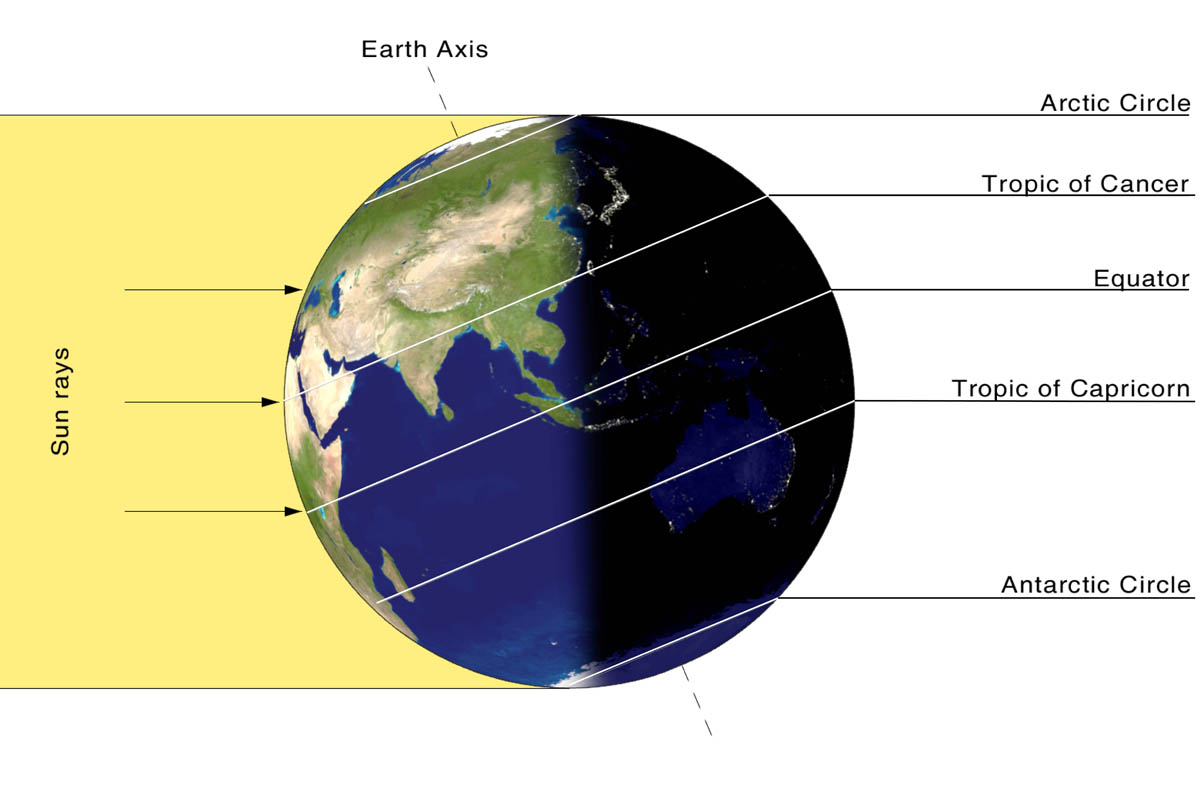
For the northern hemisphere, the Sun is directly overhead at “high-noon” on Summer Solstice at the latitude called the Tropic of Cancer.
When we think about the solstice we think about seasons on Earth. The Sun also has seasons.
The Sun gives us heat and light, which changes over the seasons. The same is true over the solar activity cycle. Instead of solar seasons changing over a year, they change over about 11 years. We call this the solar activity cycle. During this 11-year period, the Sun goes from very low activity with little or no sunspots to high activity with a lot of sunspots, solar flares, and explosions of material back to low activity at the end.
Over the course of each cycle, the star transitions from relatively calm to active and stormy, and then quiet again; at its peak, the Sun’s magnetic poles flip. Now that the star has passed solar minimum, scientists expect the Sun will grow increasingly active in the months and years to come.
Understanding the Sun’s behavior is an important part of life in our solar system. The Sun’s outbursts—including the releases of huge amounts of light and material known as solar flares and coronal mass ejections—can disturb the satellites and communications signals traveling around Earth, or one day, Artemis astronauts exploring distant worlds. Scientists study the solar cycle so we can better predict solar activity.
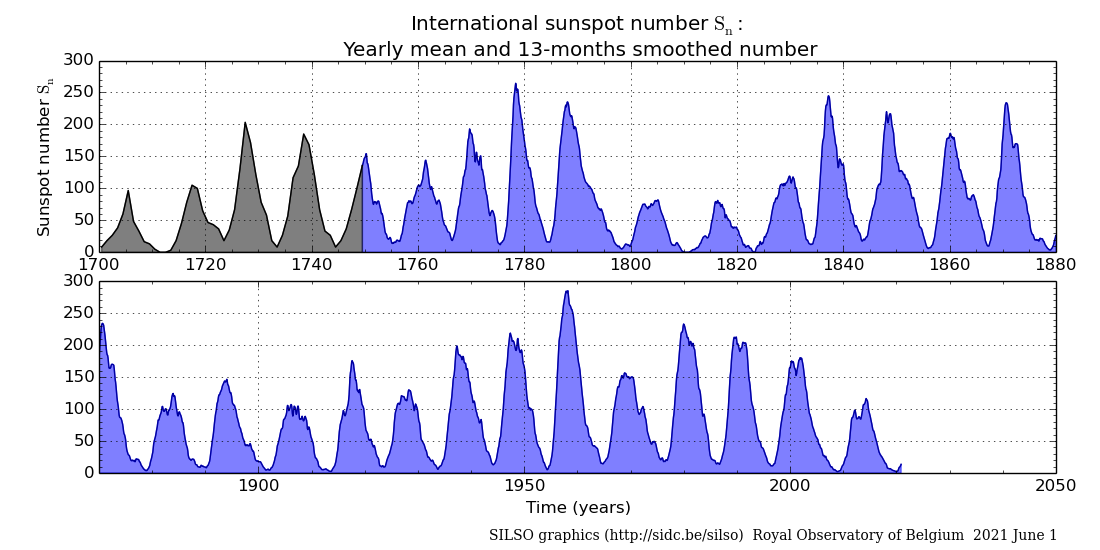
This picture shows the sunspot number over time with the yearly average sunspot number (black) up to 1749 and 13-month average sunspot number (blue) from 1749 up to the present. The peaks from 1760 to the present represent the complete numbered solar cycles from 1 to 24 with cycle 25 beginning in 2020. CREDIT: Royal Observatory of Belgium, Solar Influences Data analysis Center (SIDC)
The low points above are solar minimums, and the high points are solar maximums
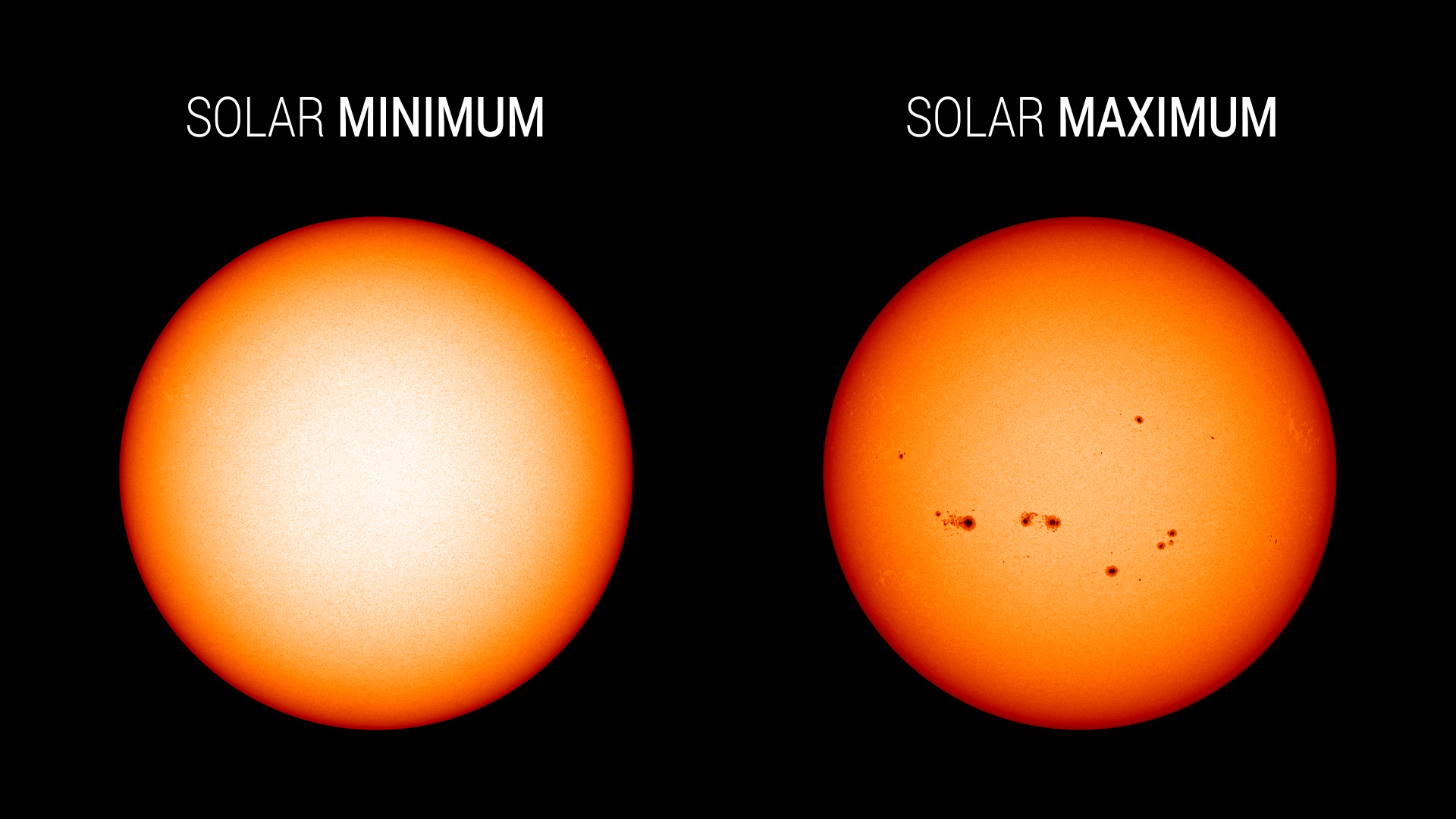
Visible light images from NASA’s Solar Dynamics Observatory highlight the appearance of the Sun at solar minimum (left, Dec. 2019) versus solar maximum (right, July 2014). During solar minimum, the Sun is often spotless. Sunspots are associated with solar activity, and are used to track solar cycle progress. Credit: NASA
But wait, there’s more!
Not only is this time of year exciting because of the June solstice, but it also corresponds to the release of a new set of forever stamps by the United States Postal Service, the Sun stamp series on June 18, 2020.
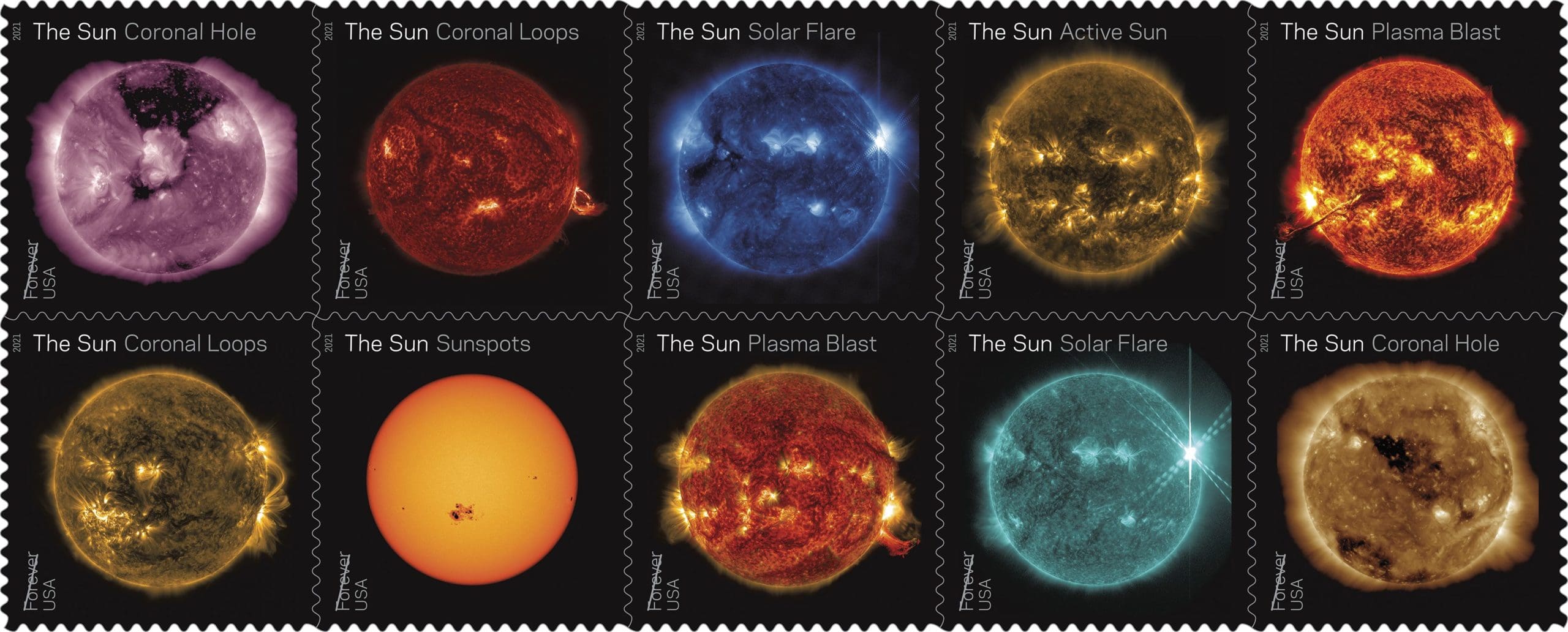
The U.S. Postal Service issued a set of stamps highlighting views of the Sun from NASA’s Solar Dynamics Observatory on June 18, 2021. Credits: U.S. Postal Service
Find out more about the new solar stamps here!
Credit: NASA Goddard Space Flight Center, NASA Scientific Visualization Studio, and the Royal Observatory of Belgium – Solar Influences Data analysis Center


